
Format: Hardback
Pages: 432
ISBN: 9781785703591
Pub Date: 31 Jan 2017
Series: Studies in Funerary Archaeology
Description:
Life and Death in Asia Minor combines contributions in both archaeology and bioarchaeology in Asia Minor in the period ca. 200 BC – AD 1300 for the first time. The archaeology topics are wide-ranging including death and territory, death and landscape perception, death and urban transformations from pagan to Christian topography, changing tomb typologies, funerary costs, family organization, funerary rights, rituals and practices among pagans, Jews, and Christians, inhumation and Early Byzantine cremations and use and reuse of tombs.
The bioarchaeology chapters use DNA, isotope and osteological analyses to discuss, both among children and adults, questions such as demography and death rates, pathology and nutrition, body actions, genetics, osteobiography, and mobility patterns and diet. The areas covered in Asia Minor include the sites of Hierapolis, Laodikeia, Aphrodisias, Tlos, Ephesos, Priene, Kyme, Pergamon, Amorion, Gordion, Boğazkale, and Arslantepe. The theoretical and methodological approaches used make it highly relevant for people working in other geographical areas and time periods. Many of the articles could be used as case studies in teaching at schools and universities. An important objective of the publication has been to see how the different types of results emerging from archaeological and natural science studies respectively could be integrated with each other and pose new questions on ancient societies, which were far more complex than historical and social studies of the past often manage to transmit.
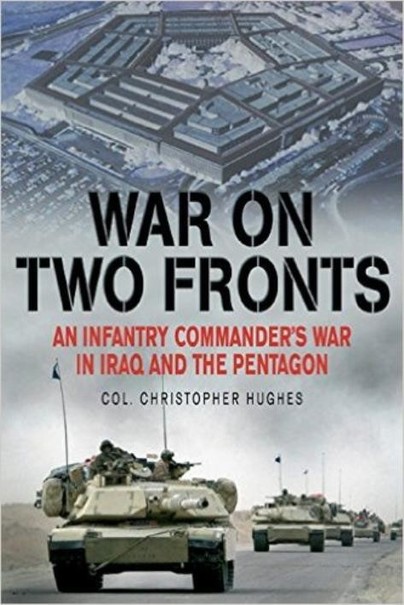
Format: Paperback
Pages: 320
ISBN: 9781612004310
Pub Date: 16 Jan 2017
Imprint: Casemate Publishers
Illustrations: 32 pages of colour
Description:
Winner of The Army Historical Foundation’s Distinguished Writing Award for Excellence in U.S. Army History Writing – Journals, memoirs and letters, June 2008 Shortly after the launch of Operation Iraqi Freedom, the war in Iraq became the most confusing in U.
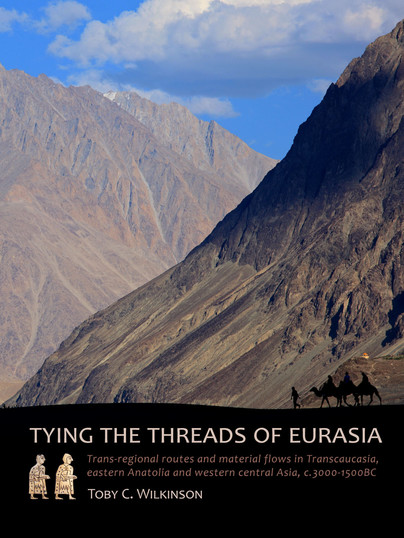
Format: Hardback
Pages: 408
ISBN: 9789088903878
Pub Date: 15 Jan 2017
Illustrations: >200fc
Description:
The famous ‘Silk Roads’ have long evoked a romantic picture of travel through colourful civilizations that connected the western and eastern poles of Eurasia, facilitating the exchange of exotic luxury goods, peoples, pathogens and ideas. But how far back can we trace such interaction? Increasing evidence suggests considerable time-depth for Trans-Eurasian exchange, with the expanding urban networks of the Bronze Age at times anticipating later caravan routes.
Tying the Threads of Eurasia applies advanced GIS modelling and critical social archaeology to carefully selected material remains from these earlier connections in order to understand and explain macro-scale processes of interaction in the wider ancient Near East between 3000 and 1500BC. Evidence related to precious stone, metal and textile objects found in Transcaucasia, eastern Anatolia and Central Asia are examined critically and spatially to provide new insights into changing socio-economic relations within and beyond these case-study regions.This book will be of interest to archaeologists and historians researching routes of exchange and interaction, macro-scale historical change or GIS approaches to archaeology, and to specialists of the Bronze Age Near East, especially Anatolia, the Caucasus, Central Asia and Iran.
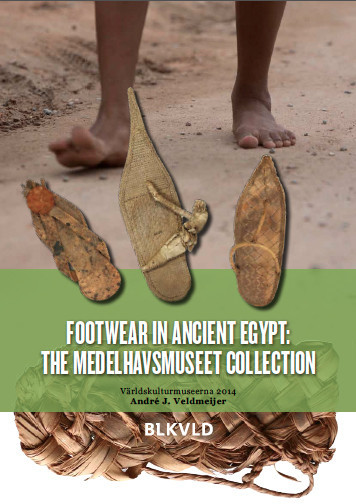
Format: Paperback
Pages: 78
ISBN: 9789080774490
Pub Date: 01 Jan 2017
Imprint: Blikvelduitgevers Publishers
Illustrations: full colour images
Description:
Footwear in Ancient Egypt by André J. Veldmeijer is a beautifully illustrated catalogue of a special collection of ancient Egyptian shoes and sandals. The Medelhavsmuseet houses this unique collection that has been made public for the first time through this publication.
In order to show the reader the way these types of footwear were once used, several reconstruction drawings have been made especially for this purpose. All objects in the collection are beautifully photographed, showing the reader extraordinary details of these fragile ancient artefacts.
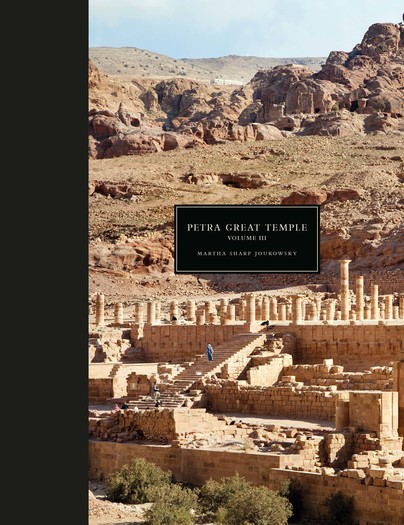
Format: Hardback
Pages: 622
ISBN: 9781785706127
Pub Date: 21 Dec 2016
Illustrations: b/w
Description:
Deeply nestled in the rift valley, the hundreds of tombs and extensive remains of the Nabataean metropolis that was once that nation’s capital city of Petra, evokes a sense of geographic protection and isolation from the outside world. With its sprawling development, Petra became a bustling city with exciting and distinctive architectural and artistic styles as the Petraeans determined what a resplendent capital with a burgeoning population and assured economic future should represent. This third volume devoted to one of its most impressive edifices, the Great Temple, builds on the previous two volumes of excavation reports to examine many facets of Nabataean material culture.
It exposes a cross-section of the material culture, from water-supply systems and architectural designs to studies of artifacts (sculpture, ceramics, numismatics, metal and bone) and subsistence patterns. Part I explores the principles of the temple layout and how it was built including Nabataean construction techniques, hydraulic systems, decoration, art and and subsidiary buildings of the precinct. Part II is devoted to additional aspects of Nabataean material culture, with chapters devoted to the site databases, ceramics and Nabataean potting traditions, lamps, figurines, glass, coins, faunal and worked bone analyses, metal objects, ballista balls, and sculpture. The volume is supported by an online database http://www.opencontext.org designed to assemble special research materials that could not be published here in print which provides the tools for researchers to perform their own analysis of the data.
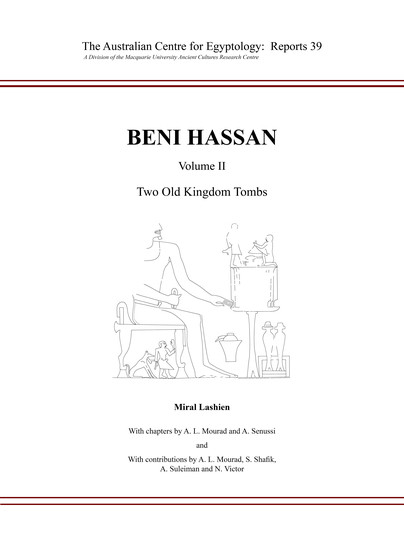
Format: Paperback
Pages: 52
ISBN: 9780856688614
Pub Date: 30 Nov 2016
Series: ACE Reports
Illustrations: 32 colour plates; 15 b&w folded plates
Description:
The second volume of the Beni Hassan series is devoted to the recording and study of the only decorated Old Kingdom tombs at the site. The tombs of Ipi and Bebi have never been completely recorded in drawing and photographs since their publication by J. Garstang in 1907.
The examination comprises detailed coloured plates, complete line drawings as well as the translation and interpretation of all the scenes and inscriptions in the tomb. The commentary additionally includes a report on the tombs' architecture as well as a study of a large amount of pottery discovered in the shafts and dating to the period from the Sixth to the Twelfth Dynasty.
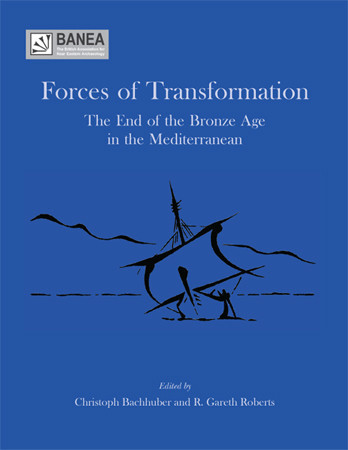
Format: Paperback
Pages: 236
ISBN: 9781842175033
Pub Date: 15 Nov 2016
Series: BANEA monograph Series
Illustrations: 149 illus
Description:
The volume is the first in nearly a decade to focus a wide range of scholarship on one of the most compelling periods in the antiquity of the Mediterranean and Near East. It presents new interpretive approaches to the problems of the Bronze Age to Iron Age transformation, as well as re-assessments of a wide range of high profile sites and evidence ranging from the Ugaritic archives, Hazor, the Medinet Habu reliefs, Tiryns and Troy. Implications for a changing climate are also explored in the volume.
The end of the Bronze Age in the Mediterranean and Near East is a huge challenge requiring a diverse, global, flexible and open minded strategy for its interpretation - it is too vast and complex for any one scholar or interpretive approach. The scope of this volume is great, but not overwhelming, as the papers are organized coherently into themes considering climate, exchange and interregional dynamics, iconography and perception, the built environment - cemeteries, citadels, and landscapes, and social implications for the production and consumption of pottery. Thus, Forces of Transformation is broad enough to address many of the major concerns of the end of the Bronze Age, and also to encapsulate the current position of scholarship as it relates to this problem.
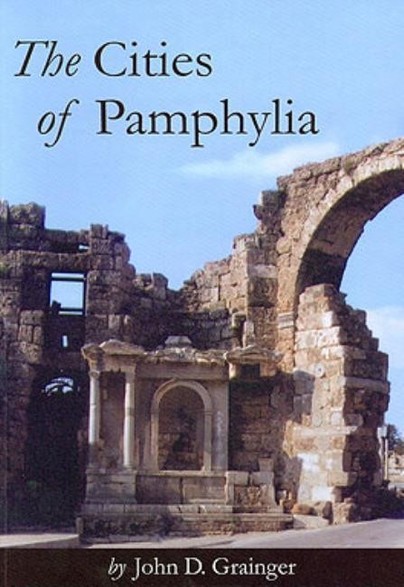
Format: Paperback
Pages: 288
ISBN: 9781842173343
Pub Date: 15 Nov 2016
Illustrations: 41 b/w illus
Description:
Pamphylia, in modern Turkey, was a Greek country from the early Iron Age until the Middle Ages. In that land there were nine cities which can be described more or less as Greek, and this book is an investigation of their history. This was a land at the margins of other great empires - Hellenistic, Roman, Arab and Byzantine - and is still off the beaten track, though Aspendos, Perge and Phaselis are all visited for their archaeology.
Only one ancient source, Strabo, discusses the area at any length, and John Grainger therefore has to bring together a wide variety of exiguous and fragmentary sources to tell the cities' story. His focus is not only regional - he is interested in the impact of outside forces on a particular civic culture. He considers the processes of city foundation, settlement, urbanisation and evolution, and the cities' mutual relations. Coastal piracy drew Pamphylia into the Roman empire, and finally, in the seventh century AD, the Arabs destroyed the cities in their wars with the Byzantine empire.
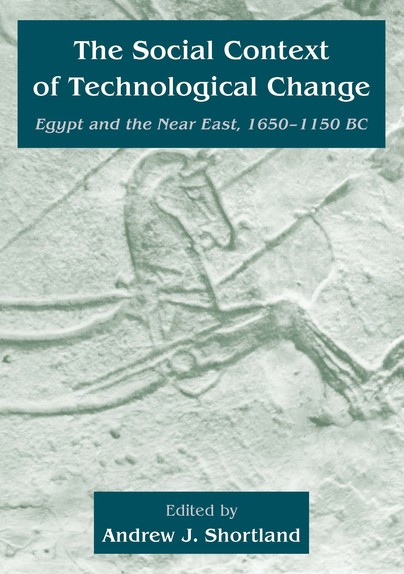
Format: Paperback
Pages: 284
ISBN: 9781842170502
Pub Date: 15 Nov 2016
Illustrations: b/w illus, 4 colour pls
Description:
The technological capabilities of the ancient world have long fascinated scholars and the general public alike, though scholarly debate has often seen material culture not as the development of technology, but as a tool for defining chronology and delineating the level of interactions of neighbouring societies. These fourteen papers, arising from a conference held in Oxford in September 2000, take the approach that technology plays a vital role in past socio-economic systems. They cover the Near East and associated areas, including Greece, Crete, Cyprus, Anatolia, the Levant, Mesopotamia and Egypt from the end of the Middle Bronze Age to the Late Bronze Age (1650-1150 BC), a period when many technological innovations appear for the first time.
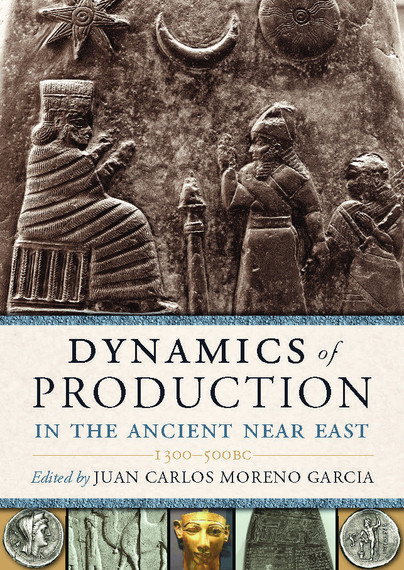
Format: Paperback
Pages: 368
ISBN: 9781785702839
Pub Date: 06 Oct 2016
Illustrations: b/w
Description:
The transition between the 2nd and the 1st millennium BC was an era of deep economic changes in the ancient Near East. An increasing monetization of transactions, a broader use of silver, the management of the resources of temples through “entrepreneurs”, the development of new trade circuits and an expanding private, small-scale economy, transformed the role previously played by institutions such as temples and royal palaces. The 17 essays collected here analyse the economic transformations which affected the old dominant powers of the Late Bronze Age, their adaptation to a new economic environment, the emergence of new economic actors and the impact of these changes on very different social sectors and geographic areas, from small communities in the oases of the Egyptian Western Desert to densely populated urban areas in Mesopotamia.
Egypt was not an exception. Traditionally considered as a conservative and highly hierarchical and bureaucratic society, Egypt shared nevertheless many of these characteristics and tried to adapt its economic organization to the challenges of a new era. In the end, the emergence of imperial super-powers (Assyria, Babylonia, Persia and, to a lesser extent, Kushite and Saite Egypt) can be interpreted as the answer of former palatial organizations to the economic and geopolitical conditions of the early Iron Age. A new order where competition for the control of flows of wealth and of strategic trading areas appears crucial.
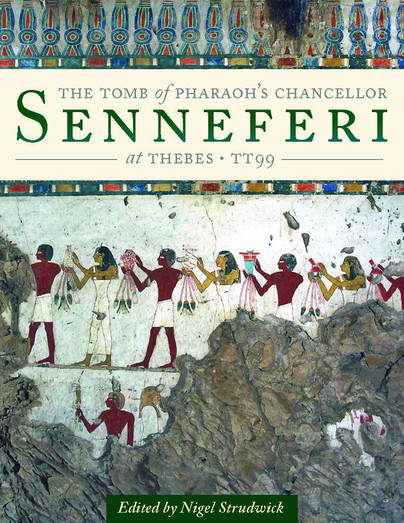
Format: Hardback
Pages: 432
ISBN: 9781785703317
Pub Date: 29 Sep 2016
Illustrations: b/w and colour
Description:
Senneferi was the chancellor of the king in Thebes (modern Luxor) in the reign of Thutmose III (c. 1430 BC). His large but badly damaged tomb lies in the hill of Sheikh Abdel Qurna on the West Bank at Luxor.
This first of two volumes focuses on the use of the tomb complex during the New Kingdom, especially the 18th dynasty (c. 1550–1300 BC). It begins with an account of Senneferi himself, looking at his career, his family and other monuments made in his name as far apart as Gebel Silsila in southern Egypt and the Sinai peninsula. The central section deals with the development of the layout of the tomb during this period and its recent exploration, including a detailed reconstruction of its history from 1430 BC to the 20th century AD. The remaining chapters detail the decoration and finds from the excavations, including a painted statue of Senneferi’s son-in-law and a unique set of implements from the Opening of the Mouth ritual, as well as possibly the largest ceramic assemblage yet known in a tomb of this date. This book presents the results of the detailed analysis of what at first sight appear to be unpromising finds and reveals new insights into burial practices at the height of the 18th dynasty.

Format: Hardback
Pages: 300
ISBN: 9781842173848
Pub Date: 24 Jul 2016
Series: American School of Prehistoric Research Monograph
Description:
Ancient Irrigation Systems in the Aral Sea Area is the English translation of Boris Vasilevich Andrianov's work, Drevnie orositelnye sistemy priaralya, concerning the study of ancient irrigation systems and the settlement pattern in the historical region of Khorezm, south of the Aral Sea (Uzbekistan). This work holds a special place within the Soviet archaeological school because of the results obtained through a multidisciplinary approach combining aerial survey and fieldwork, surveys, and excavations. This translation has been enriched by the addition of introductions written by several eminent scholars from the region regarding the importance of the Khorezm Archaeological-Ethnographic Expedition and the figure of Boris V.
Andrianov and his landmark study almost 50 years after the original publication.

Format: Hardback
Pages: 272
ISBN: 9780714111308
Pub Date: 30 Jun 2016
Illustrations: 49 b&w plates; 1 col plate
Description:
Where the Egyptians have wall paintings, the ancient Near East has cylinder seals as the main source of illustrative material, covering a range of subject matter and periods not covered by relief sculptures. The seals are particularly attractive, and the inscriptions are rare examples of personal prayer from the ancient world. This volume continues the story of the cylinder seal styles of the second millennium BC beyond Babylonia in this internationally recognized series documenting the British Museum’s cylinder seals collection.
The Isin/Larsa and Old Babylonian Periods of the early 2nd millennium BC merited a whole volume (Volume III), as did the succeeding Neo-Assyrian and Neo-Babylonian periods of the 1st millennium BC (Volume V) and the Pre-Achaemenid and Achaemenid periods of the 1st millennia BC-AD in Iran (Volume VI). However, between 2000 and 1000 BC whole series of regional glyptic styles were developed in various autonomous kingdoms and city states. Each of these has merited its own chapter or section within this current volume, with its own selection of photographs and catalogue entries. As the seals featured in this volume came from a number of different sites, they reflect a greater variety of styles than is the case with the single-period or single-origin groups of seals treated in the previous catalogues. There was also a greater exchange of seal-cutting expertise between the various kingdoms, and it is possible to make tentative suggestions as to seals possibly cut by the same craftsman.
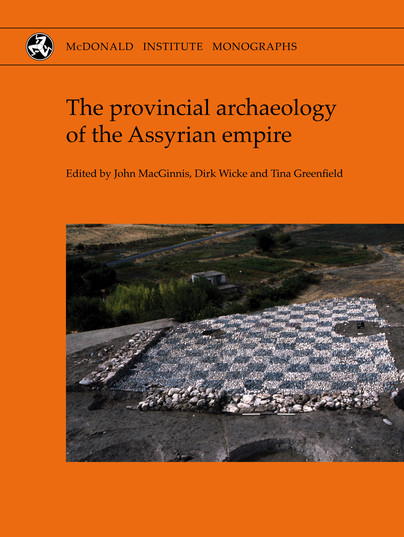
Format: Hardback
Pages: 408
ISBN: 9781902937748
Pub Date: 13 Jun 2016
Description:
The Assyrian empire was in its day the greatest empire the world had ever seen. Building on the expansion of the Middle Assyrian state in the late second millennium BC, the opening centuries of the first millennium witnessed a resurgence which led to the birth of a true empire whose limits stretched from Egypt to Iran and from Anatolia to the Persian Gulf. While the Assyrian imperial capital cities have long been the focus of archaeological exploration, it is only in recent decades that the peripheral areas have been the subject of sustained research.
This volume sets out to synthesise the results of this research, bringing together the outcomes of key investigations from across the empire. The provincial archaeology of the empire is presented in a new light, with studies of the archaeological imprint of Assyria in present-day Israel, Iran, Iraq, Syria and Turkey. A wide range of methodological and interpretive approaches are brought to bear on the data. Analyses of environmental zones and ecofactual datasets, material culture and architectural traditions, the permeation of literacy and the use of para-literate systems form the platform for innovative and integrative evaluations and lead to a new appreciation for the diversity of local responses to the Assyrian expansion.

Format: Paperback
Pages: 160
ISBN: 9781785703638
Pub Date: 08 May 2016
Series: Current Research in Egyptology
Illustrations: b/w
Description:
The sixteenth Current Research in Egyptology (CRE) conference was held from the 15–18 April 2015 at the University of Oxford and once again provided a platform for postgraduates and early career Egyptologists, as well as independent researchers, to present their research. These proceedings for CREXVI represent the wide range of themes that were offered by delegates during the conference. Papers focus on the theme of travel in ancient Egypt from a wide range of perspectives such as concrete or abstract travels, travel in space and time, travel inside, to, or from Egypt, travel in literature, travel of beliefs and ideas or travel of objects.

Format: Hardback
Pages: 288
ISBN: 9781785701115
Pub Date: 18 Mar 2016
Series: BANEA monograph Series
Illustrations: b/w and colour images
Description:
The city of Carchemish in the valley of the Euphrates river can be regarded as one of the iconic sites in the Middle East, a mound complex known both for its own intrinsic qualities as the seat of later Hittite power and Neo-Hittite kings, but also because its history of excavations included well known historical figures such as Leonard Woolley and T. E. Lawrence.
However, because of its location within the military zone of the Turkish-Syrian border the site itself has been inaccessible to archaeologists for more than 90 years. Carchemish in Context summarises the results of regional investigations conducted within the Land of Carchemish Project in Syria, as well as other archaeological surveys in the region, in order to provide a regional, historical and archaeological context for the development of the city. A synthesis of the history of Carchemish is presented and a regional overview of the Land of Carchemish as it is defined by archaeological features and key historical references through to the early Iron Age. Insightful snapshots of the dynamics of an ancient state are revealed which can now be seen to have fluctuated dramatically in size throughout 700-800 years, in part depending upon the power of the king of Carchemish or the aggressions of external powers.The results from the Project provide an overview of the main trends of settlement in the region over 8000 years, using a combination of survey databases to both north and south of the Syrian-Turkish border and with a focus on the earlier phases of settlement from the Neolithic until the end of the Bronze Age when Carchemish became an outpost of the Hittite empire. The Iron Age is a period blessed by numerous historical records some of which can be traced in the modern landscape. Further chapters explore site-specific aspects of the regional archaeology, including a series of important sites on the Sajur river, some of which were positioned along the main campaign routes of the Assyrian kings. The close relationship between the nearby Early Bronze Age site of Tell Jerablus Tahtani and Carchemish are examined and the results from the 40 ha Carchemish Outer Town survey described, providing important new data sources regarding the layout, defences and dates of occupation of this significant part of the city. The Classical, Roman, Byzantine and Early Islamic occupations are also discussed in relation to what is known of occupation in the surrounding region.
















